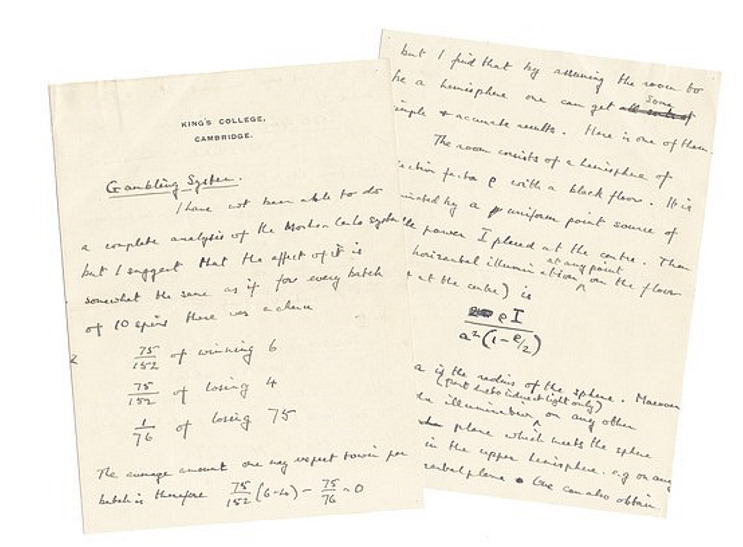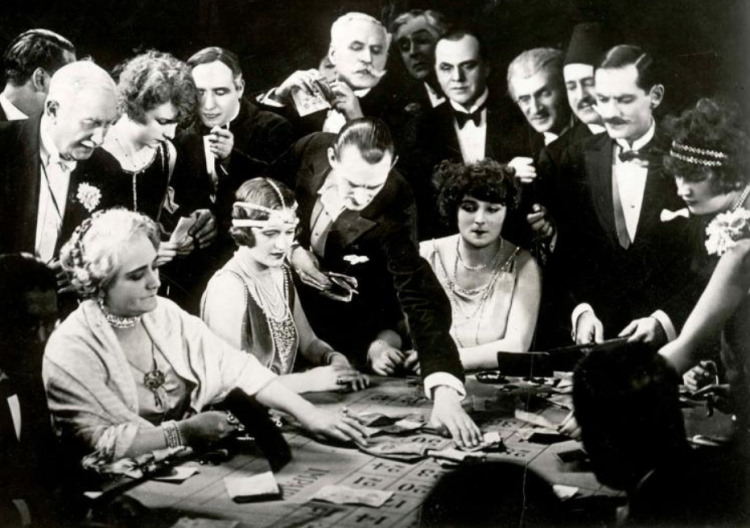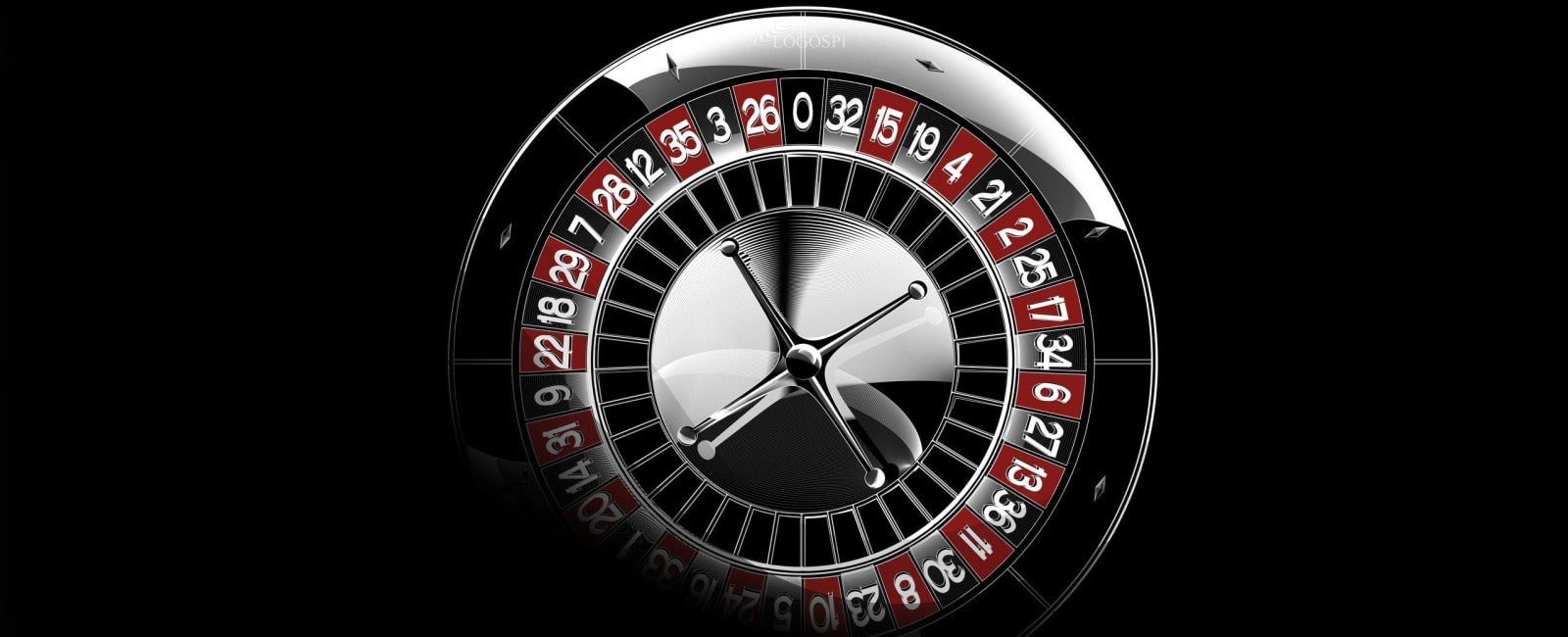Alan Turing Roulette Letters
The maths genius turns his eye to roulette
Letters from Alan Turing that were sold at auction in 2021 show that the maths prodigy who helped crack the Enigma code during the Second World War was working on a system to try and crack the roulette wheel.
The correspondence, written from King’s College in Cambridge and titled “Gambling System” features equations to calculate the chances of winning at roulette. The letter was written by Turing when he was 21 in 1933 and was addressed to his friend Alfred Beuttell, the inventor of strip lighting.

Beutnell claimed he played the system in his youth at the Grand Casino Monte Carlo and was able to pay his way for a month on the French Riviera.
Maybe the Martingale?
Looking at the letter, it looks like a variation of the Martingale System. Turing analysed the probabilities of predicting the right outcome after 150, 1,520, 4,560 and 30,400 spins of the wheel.
He concluded that it was possible to win ‘an unexpectedly large sum’ in a short time frame but the longer the system was used, the ‘more remote his chances’.

This is pretty much our advice on the Martingale System which can work in short bursts, but the longer you are at the table, the more likely you are to experience long sequences of the same colour(for example). The house edge gets you in the end when you play a long session.
His analysis of Beuttell’s Monte Carlo Roulette System was basically a bit of fun, but it does illustrate Turing’s interest in probability, and how that can be applied to cryptology which is what ultimately enabled him to crack the Nazi’s code in Bletchley Park.
Turing became best buddies with Alfred Beuttell’s son Victor when they were at Sherborne School in Dorset in the 1920s.
In a nutshell, Turing was saying that Beuttell’s winning streak was all down to beginner’s luck.
The Enigma Code
Turing is most famous for his leadership of a team of cryptanalysts that cracked the German “Enigma” code in the Second World War of course. By successfully cracking the Nazi code, the British were able to read coded German coded messages, which shortened the war in Europe, saving hundreds of thousands of lives.

